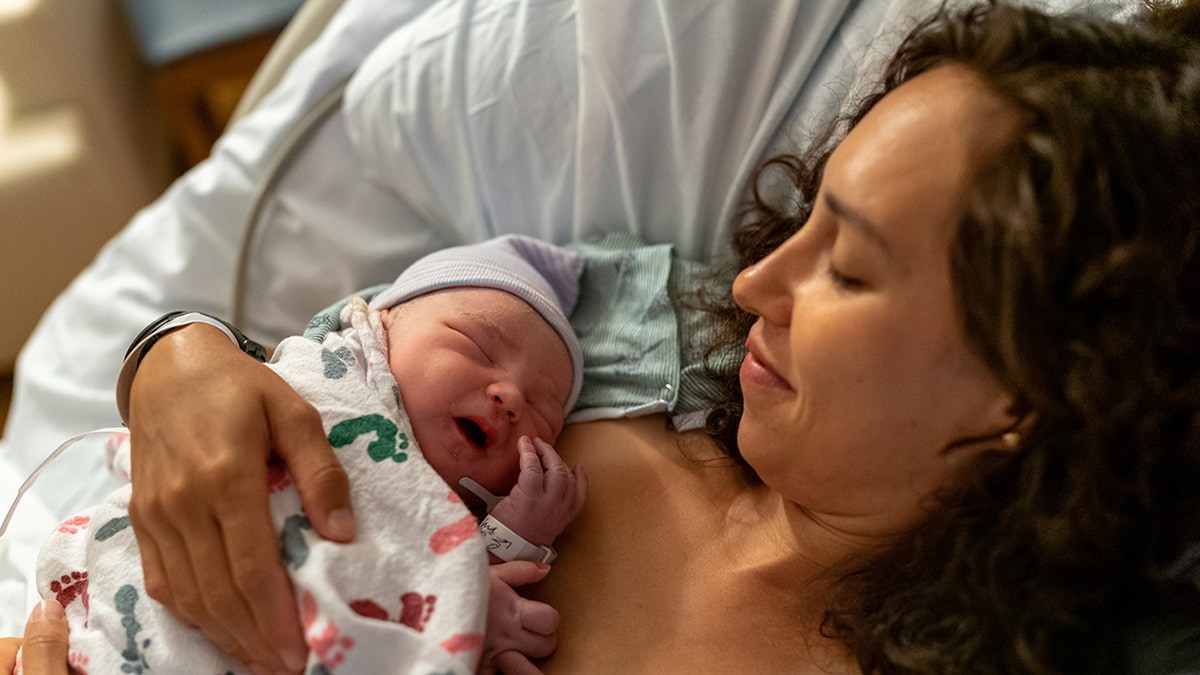What to know
The information below is provided for healthcare providers to increase awareness of vitamin K deficiency bleeding and the need to provide reliable information to expectant parents about the benefits of a single vitamin K shot after birth before they get to the delivery room.

Talk to expectant parents about the benefits of the vitamin K shot for newborns
Although the vitamin K shot is safe and, as recommended by the American Academy of Pediatrics, has been routinely given to newborns at birth since 1961, some parents refuse the shot due to myths and misperceptions about its safety. This puts babies at risk for dangerous bleeding that can lead to brain damage and even death.
As a healthcare provider, you are in a unique position to debunk these myths and misperceptions. Provide reliable information to parents about the benefits of vitamin K so that they can make the most informed choices about their child's medical care and protect them from potentially devastating health consequences.
- Talk to expectant parents before they get to the delivery room about the benefits of a single vitamin K shot after birth.
- Encourage expectant parents to protect their newborn by making sure the baby gets the shot after birth.
Purpose of vitamin K
Vitamin K refers to a group of structurally similar fat-soluble molecules that are primarily involved in the synthetic pathways of a number of clotting factors. Vitamin K is also involved in bone metabolism.
Sources of vitamin K
Adults get vitamin K from food—mainly leafy green vegetables—and from bacterial synthesis in the gut. Babies have very little vitamin K in their bodies at birth because only small amounts of the vitamin pass through the placenta. Also, the bacteria that produce the vitamin in the newborn’s intestines are not yet present.
Breast milk contains only low levels of vitamin K, and it may take weeks to months for the infant’s sterile gut to become established and functional. Infants are therefore predisposed to having low vitamin K levels, resulting in low levels of vitamin K-dependent clotting factors and an increased risk for bleeding, termed vitamin K deficiency bleeding (VKDB).
What is VKDB?

Infants who do not receive the vitamin K shot are at risk for developing VKDB.
VKDB can be classified according to the time of presentation after birth into early (within the first 24 hours), classical (2 days to 1 week), and late (1 week to 6 months) VKDB.
- Early VKDB is severe and is mainly found in infants whose mothers used certain medications during pregnancy that interfere with vitamin K metabolism, such as certain anticonvulsants or isoniazid.
- Classical VKDB is typically characterized by bruising or bleeding from the umbilicus.
- Late VKDB is the most concerning type—this bleeding occurs up to 6 months of age in previously healthy infants. Most commonly it occurs from 2 to 8 weeks after birth. Between 30% and 60% of late VKDB presents as an intracranial bleed. This life-threatening complication tends to occur in exclusively breastfed infants who have received no or inadequate vitamin K prophylaxis; warning bleeds before an initial severe event are rare.
Infants who do not get the vitamin K shot at birth are at 81 times greater risk for developing VKDB than infants who do get the shot. VKDB is effectively prevented by the vitamin K shot—incidence of late VKDB, the most concerning type, falls to less than 1 in 100,000 infants when vitamin K is given at birth.
What are the warning signs of VKDB?
In the majority of cases of VKDB, there are NO WARNING SIGNS at all before a life-threatening bleed occurs. Infants who do not get vitamin K at birth might develop any of these signs of VKDB:
- Bulging fontanelles
- Diffused bruising and ecchymosis
- Feeding intolerance, irritabilities
- Epistaxis
- Jaundice and pallor
How can I prevent VKDB?
Make sure all newborns receive vitamin K prophylaxis. Administration of vitamin K (1 mg) into a thigh muscle after birth can prevent intracranial bleeding and other hemorrhagic manifestations. In order to provide for immediate bonding and contact between the newborn and mother, giving the vitamin K shot can be delayed up to 6 hours after birth.
Is vitamin K safe?
A study from the early 1990s found a possible link between intramuscular vitamin K administration and leukemia. Multiple follow-up studies did not confirm these findings.
Where can I get more information?
For more information, please visit these pages:
- Hand I, Noble L, Abrams SA; AAP Committee on Fetus and Newborn, Section on Breastfeeding, Committee on Nutrition. Vitamin K and the Newborn Infant. Pediatrics. 2022;149(3):e2021056036.
- Zipursky A. Prevention of vitamin K deficiency bleeding in newborns. Br J Haematol 1999;104:430–7.
- Sutor AH, Kries R, Cornelissen EAM, McNinch AW, Andrew M. Vitamin K deficiency bleeding (VKDB) in infancy. Thromb Haemost 1999;81:456–61.
- McNinch AW, Tripp JH. Haemorrhagic disease of the newborn in the British Isles: two year prospective study. BMJ 1991;303:1105–9.
